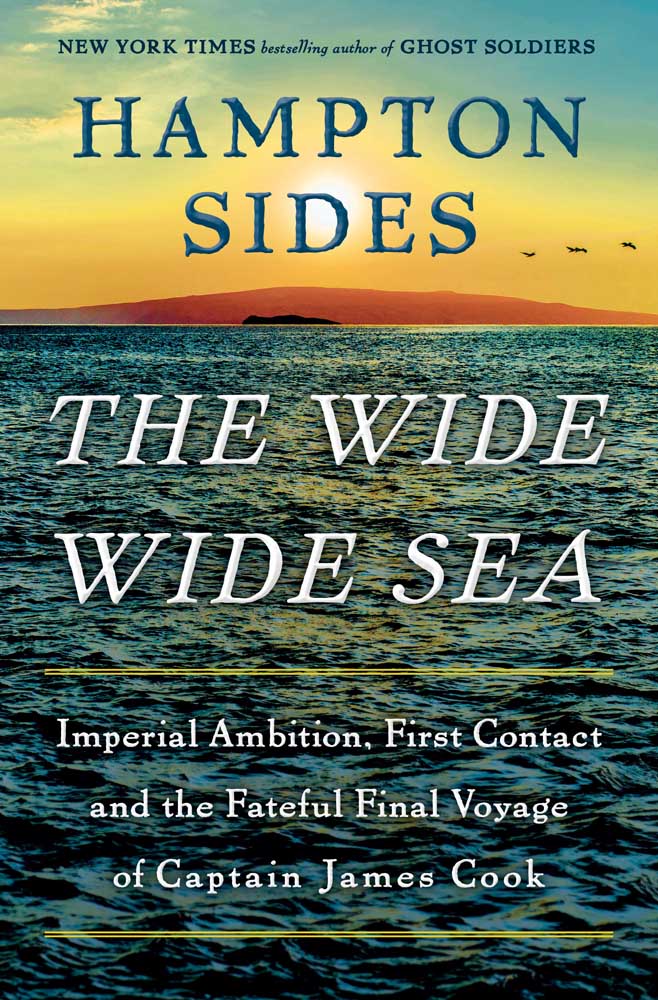Book review: A gripping account of Captain Cook’s final voyage
Published 9:00 pm Wednesday, April 24, 2024

- The wide wide sea
I’m grateful to the Santa Fe bookseller who put Hampton Sides’ “Blood and Thunder” into my hands some years ago. With Kit Carson’s death-defying exploits at its center, the book revolutionized my concept of America’s westward expansion. Sides’ latest effort, “The Wide Wide Sea,” is a gripping account of Captain James Cook’s final voyage.
Cook is a controversial historical figure, especially in light of increasing consciousness about the evils of colonialism. Sides does not skirt the rapacious appetites of the British and other European monarchies. The magic of this book, however, is in the details of the explorer’s life at sea. Sides relies on Cook’s writings as well those of other sailors on the voyage.
Cook had made two world voyages by the time the book opens. He was a celebrity, having “risen from virtually nothing.” At sea, he’d bucked the Royal Navy’s tradition of violence and cruelty. He’d figured out how to avoid scurvy and brought home information of incomparable value, had mastered new nautical instruments and served as an expert scientist, anthropologist and navigator. His mapmaking skills were superlative.
After only six months at home, he took off again, in search of the elusive Northwest Passage. His third expedition consisted of 180 people in two wooden ships, the Resolution and the Discovery. They left England in July 1776.
In addition to Cook’s story, other narratives weave through the book. One particularly fascinating account is that of Mai, a native of Raiatea, a volcanic island 130 miles northwest of present-day Tahiti. When Mai was a boy, warriors from Bora Bora invaded Raiatea, murdered his father, seized his family’s land and enslaved much of the population, forcing his family to take refuge in Tahiti. In 1767, a teenage Mai witnessed the English navy’s firepower when Samuel Wallis, a British navigator, arrived in the HMS Dolphin and fought the Tahitians. Vowing to avenge his people against Bora Bora, Mai concluded that English guns were the way to go. When Cook sailed in seven years later on his second Pacific voyage, Mai requested passage, becoming the first Polynesian to set foot on English soil.
Mai’s story reads as metaphor for colonialism. He learned English and was wined and dined as a celebrity. Although horrified by London’s grinding poverty, unthinkable in his homeland, he wore the local dress and adopted the manners of a foppish English gentleman. He met King George, who provided Mai and Cook with a large assortment of farm animals and domesticated birds, to cement the king’s footprint around the globe. No surprise — the animals were hell to care for. Mai had been in search of heavy artillery from King George, but for the voyage was given only an “arsenal of muskets [and] broadswords,” as well as gifts that would have been unimaginable to the Polynesians — cut-glass bows, laced hats, crockery and telescopes. If not the cache Mai hoped for, it does reflect the English royalty’s strategy for winning friends.
It isn’t possible in this short space to describe Sides’ hair-raising accounts of the journey, an itinerary that led from England to present-day South Africa, South America, Australia, New Zealand, Polynesia, Hawaii, north to Alaska and beyond, and back to Hawaii. Just repairing and re-provisioning the ship required herculean efforts. The physical threats included days-long ocean storms, fog so thick it wasn’t possible to see from stern to bow and cold temperatures against which no garment could protect.
Cook understood that his men were vectors for infection. An ascetic, he occasionally stopped his men from going ashore to prevent the spread of venereal disease. At times he restrained his crew from violence; at other times, his temper was uncontrollable. After a series of petty thefts from the ship by Tongo natives, Cook ordered brutal floggings and had a villager’s ears cut off. In punishment for one Moorea person stealing a goat, Cook had the village and its cropland torched, along with its canoes. Sides suggests that over the course of this final voyage, Cook may have been suffering declining mental faculties.
People tend to know Cook was killed by native people in Hawaii. The events leading up to his death are gruesome and upsetting, including “cannibalism” made more explicable in Sides’ measured account.
This book captures a time when Europeans were finding unfathomable new worlds. Armed with extensive research and terrific writing, Sides re-creates the newness of the experience, the vast differences in and among Indigenous cultures, and natural phenomena that were as terrifying as they were wondrous.








